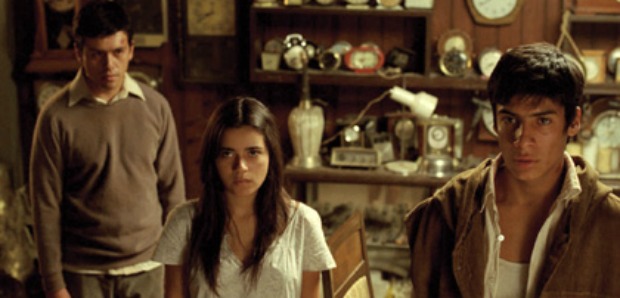We Are What We Are
With an opening that evokes a post-apocalyptic atmosphere, We Are What We Are begins with a suitably eerie tone.
Plot summary
A middle-aged man dies in the street, leaving his widow and three children destitute. The devastated family is confronted not only with his loss but with a terrible challenge - how to survive. For they are cannibals.

With an opening that evokes a post-apocalyptic atmosphere, We Are What We Are begins with a suitably eerie tone. A dishevelled middle-aged man slowly dies in the smart shopping area of a Mexico city, his body speedily cleaned away and mopped up before it is even cold.
When the news reaches his reclusive family, it becomes apparent that his death is about to tear their lives apart, as we learn how he provided their means of survival. The family are cannibals and, as the head of the family, the father was the person responsible for bringing home their “bacon” so to speak.
So – a grisly premise, a desperate family and a fight for survival – although early signs indicated that this horror film was going to deliver on its promise of being “a remarkable reinvention of the horror genre,” you may well have guessed even before I did, that this unfortunately was not to be; not least because there wasn’t a huge amount of reinvention going on.
Plot holes aside, as let’s face it many films – horror or otherwise – tend to be riddled with them, it was virtually impossible to really care for the characters or their plight. Whether it was the wimpish Alfredo, clichéd Julian, inconsistent Sabina or incomprehensible Patricia, there was nothing remotely engaging about any of them. Whether or not they managed to eat human flesh or not was neither believable nor “shocking”, and although the film intends to give a moving portrayal of the emotional bonds between family members breaking under the terrible strain of their attempts to survive – it didn’t.
For those interested in the gore factor, there was a large dollop of gruesome and unpleasant violence, and Carmen Beato as Patricia is clearly very adept at swinging heavy implements at the heads of, well, anyone really. And the meat hooks hanging innocently alongside the family’s coats for much of the film are also used for their intended purpose, albeit a little more prematurely than at the butcher’s shop.
Oddly, the subplots of this film were far more intriguing, and it is unfortunate that these did not feature more prominently. At the father’s autopsy we meet the incompetent police force who, on the discovery of an undigested finger in the man’s body, declare that they don’t solve old cases – nor do they solve new ones. It is only because of their obvious ineptitude, implied corruption and clear brutality that it is possible to feel any sympathy for the rather dull family as they clumsily attempt to satisfy their bloodlust.
Also intriguing is the snobbery of the family members about eating humans of a certain background. The mother has a particular aversion to prostitutes, whilst the younger brother refuses to eat gay men and, if they’re meant to be so hungry, I wouldn’t have thought that would be an issue. And anyway, if they’re starving, why can’t they just eat a rare steak or even some vegetables for goodness sake? But, alas, these questions are never resolved.
Since Marc Price went and made us feel all sympathetic for his ravenous flesh-eating zombie Colin last year, perhaps this is a new phase of horror where, instead of being fearful of the “bad-guy”, the audience feel sympathy and begin to wonder about their own inner evil – or something like that. However, in Colin it was possible to feel an emotional connection to the character as the film showed his personality, and crucially his motivations. Unfortunately, We Are What We Are didn’t.











COMMENTS